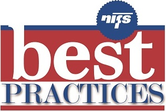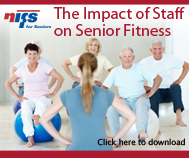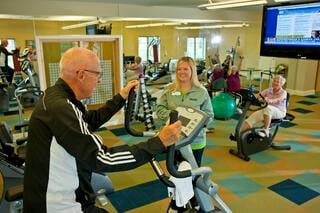 Your residents need quality leadership in order to engage in the fitness services.
Your residents need quality leadership in order to engage in the fitness services.
There is a lot of movement in recent years for senior living communities to include expansive, thoughtfully designed fitness spaces in their new community development or refurbishment plans. Surveys have indicated that wellness is a priority for prospects, and we don’t really see that going away as the boomers look toward their next life and how they want to live that next chapter. (I know you’ve heard this a gajillion times, but they are coming, and no amount of burying your head in the sand will change that. Get ready or get out of the business of anticipating their needs and knocking their socks off.)
So if you read part 1 in this blog series, you read about how your investment in wellness cannot stop with capital dollars. In this section we’re focused on why your residents need quality leadership in order to engage in the fitness services.
What Quality Fitness Leadership Is Not
Let me start perhaps with a list of exclusion—a list of what quality leadership is not. It is not limited to a traditional 1990s model of group fitness classes and a very part-time, questionably qualified attendant. It is not a personal trainer service (fee-based or free). It is not a silo-style environment where fitness is an island operating independently of what’s happening with activities, or resident services, or dining or other continuums of the community.
If any of that sounds familiar, I have a bad news/good news message for you.
- Bad news: You’re stuck in a decades-old model. It may be working for you, but it’s worth asking whether it’s truly delivering on your brand promise. I would submit to you, at the very least, that if you’re working within a dated model, you’re lacking the capacity to truly be forward thinking. If your fitness services were built to be really strategic and forward thinking, you wouldn’t still be partying like it’s 1999.
- Good news: You have fantastic opportunities to do more for your residents through your fitness program.
Quality Fitness Leadership Includes Core Skills and Soft Skills
Quality fitness leadership for your residents isn’t rocket science, but it does require some core skills that are learned through an accredited university curriculum, as well as soft skills that articulate a true passion for serving the residents in your community.
No doubt, you have more than enough practice at ferreting out the soft skills piece; after all, finding people who want to make a career out of serving our elders is your business. But understanding the technical competencies required in a qualified fitness center manager for your senior living community may be a little trickier. And then once you’ve found that qualified individual, you need to be prepared to take a strategic approach to on-boarding them in your community, which includes preparing both existing staff and residents for the new personnel.
The Keys to Hiring the Right Fitness Center Manager
There are a few keys about hiring that I think are helpful to communities venturing out in this process on their own. I’ve listed them quite briefly here:
- Make sure you get familiar with the candidate’s credentials. Carefully evaluate certifications they list; not all fitness certifications are created (or earned) equally.
- Require the candidate to demonstrate the skills required for the job. If you need them to teach group exercise classes for your residents, have the candidate provide a demo. If you need someone who can administer a senior fitness test, talk through that testing with the candidate or host a mock test as part of the interview.
- Ensure the candidate can program for your audience. Evaluate their capacity to create print materials that fit with your brand, as well as the skills to execute a program from start to finish.
I’m here to tell you that those capable and passionate professionals do exist. We’ve written extensively about how to hire and how to successfully onboard fitness and wellness professionals. To discuss in greater detail, drop me an email and we can take a closer look at what you need as well as options on how to get there. Subscribe to our blog now to make sure you can catch part 3 of this blog series: What marketing needs in order to really sell your new amenity to prospective residents.

 From the
From the 
 Make no mistake about it, physical activity is important. Study after study
Make no mistake about it, physical activity is important. Study after study 
 Unless you live under a really, really big rock, you have no doubt heard about the importance of robust wellness opportunities as central to a successful senior living community. There have been some fabulous profiles lately on organizations that are doing an amazing job of connecting their residents and others in the surrounding areas to opportunities to live well. Two recent examples highlighted by
Unless you live under a really, really big rock, you have no doubt heard about the importance of robust wellness opportunities as central to a successful senior living community. There have been some fabulous profiles lately on organizations that are doing an amazing job of connecting their residents and others in the surrounding areas to opportunities to live well. Two recent examples highlighted by 
 When I first began working at a CCRC a year ago I learned that Zumba® classes were being taught. I was very intrigued and actually sat in on the class within the first couple days of being here. Prior to attending the class, I kept thinking to myself that this was a pretty intense class to be taught to seniors. After attending the class I was pleasantly surprised as to how enjoyable the class is for the participants. The type of class that was being taught is actually called Zumba Gold® and was specifically designed for active seniors as well as those participants who may not be ready for full on Zumba®. Zumba Gold® still uses the same concept of original Zumba® by incorporating exciting Latin and international dance rhythms. Some of these dances include Merengue, Salsa, Cha Cha, Cumbia, and Belly Dancing. You are guaranteed to get a full body workout but the exercises are modified for success and safety. A lot of the moves may even be done at 1/2 tempo so that everyone is able to follow. The most interesting thing that I observed was that many of the participants were seated during the Zumba Gold® class. This makes the class available to everyone, including those who may be in wheelchairs or are unable to stand for long periods of time.
When I first began working at a CCRC a year ago I learned that Zumba® classes were being taught. I was very intrigued and actually sat in on the class within the first couple days of being here. Prior to attending the class, I kept thinking to myself that this was a pretty intense class to be taught to seniors. After attending the class I was pleasantly surprised as to how enjoyable the class is for the participants. The type of class that was being taught is actually called Zumba Gold® and was specifically designed for active seniors as well as those participants who may not be ready for full on Zumba®. Zumba Gold® still uses the same concept of original Zumba® by incorporating exciting Latin and international dance rhythms. Some of these dances include Merengue, Salsa, Cha Cha, Cumbia, and Belly Dancing. You are guaranteed to get a full body workout but the exercises are modified for success and safety. A lot of the moves may even be done at 1/2 tempo so that everyone is able to follow. The most interesting thing that I observed was that many of the participants were seated during the Zumba Gold® class. This makes the class available to everyone, including those who may be in wheelchairs or are unable to stand for long periods of time.
 You're senior living community is missing out on some important benefits if you don't have detailed data from your fitness program. Read on to find out what you stand to gain by getting smarter about gathering and using data from resident participation in the fitness center and group exercise classes as well as evaluating resident participation in fitness center appointments and services.
You're senior living community is missing out on some important benefits if you don't have detailed data from your fitness program. Read on to find out what you stand to gain by getting smarter about gathering and using data from resident participation in the fitness center and group exercise classes as well as evaluating resident participation in fitness center appointments and services.
 The heat index is approaching 100 degrees, and its only 8am. You are sick to death of running on the treadmill at the gym and want another option to burn some calories and improve your cardiovascular endurance. Well, my friend, have you considered the pool? You don’t have to be a swimmer, have fancy equipment, or even be coordinated to get a great workout in the pool.
The heat index is approaching 100 degrees, and its only 8am. You are sick to death of running on the treadmill at the gym and want another option to burn some calories and improve your cardiovascular endurance. Well, my friend, have you considered the pool? You don’t have to be a swimmer, have fancy equipment, or even be coordinated to get a great workout in the pool. 
 Part 2: Eight Strategies to Bring About Successful Collaboration
Part 2: Eight Strategies to Bring About Successful Collaboration
 Part 1: Who Should Be Contributing to Resident Wellness?
Part 1: Who Should Be Contributing to Resident Wellness?